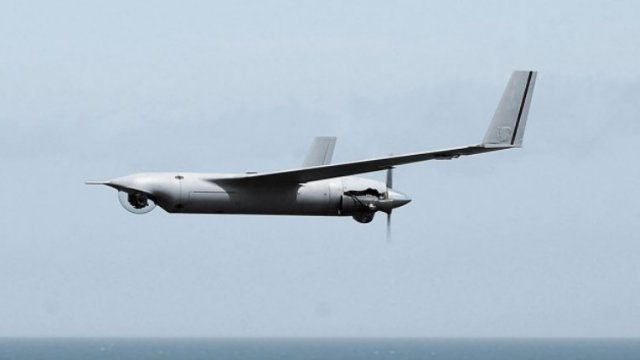 The Boeing/Insitu ScanEagle unmanned aerial system (UAS) is to soon compete for a place within Brazil’s maritime situational awareness system, officials announced at FIDAE 2014.
The Boeing/Insitu ScanEagle unmanned aerial system (UAS) is to soon compete for a place within Brazil’s maritime situational awareness system, officials announced at FIDAE 2014.
In February ship-launched ScanEagle UASs completed a three-day maritime deployment demonstration with the Brazilian Navy, and the systems are to be submitted to compete for Brazil’s SisGAAz (Sistema de Gerenciamento da Amazônia Azul) maritime ISR system, Juan Gomez, director of international business development for Insitu, told reporters on 26 March.
Brazil is expected to release a request for proposals (RfP) for SisGAAz in the fourth quarter of fiscal year 2014 (FY 2014) or first quarter of FY 2015. SisGAAz is intended to monitor and control Brazil’s huge ‘Blue Amazon’ maritime domain with an observation satellite, aircraft, thermal cameras, an automatic identification system, vessel traffic system, coastal radars, radio goniometry, submarine acoustic devices, long-range identification and tracking systems, and a command-and-control capability.
Gomez said the ScanEagle demonstration went smoothly and included about 20 hours of electro-optic (EO) and mid-wave infrared (IR) operations in rough sea states.
In 2012 the company also demonstrated ScanEagle on a Chilean frigate for 10 days, but Gomez noted that this did not lead to a sale as Chile’s navy does not have a requirement.
Still, 15 states operate the ScanEagle, including Canada, Colombia, Italy, the Netherlands, Poland, Lithuania, Romania, Tunisia, Singapore, Malaysia, the United Kingdom, the United States, and others. Some of the systems are employed via a services model and some customers cannot be mentioned, he said.
Gomez said the company is now mainly focused on adding features to the platform and continuing to book international sales.
The UASs are deployed with the Combined Task Force 151 (CTF-151) counter-piracy group, and have conducted CTF-151 operations with the US Navy (USN), Canadian Navy, and Dutch Navy. Gomez projected that in next year or so the Spanish Navy would buy and employ ScanEagle with CTF-151 and the Italian Navy would complete a certification process to make its fleet operational for use with the task force.
ScanEagle is mainly used as an ISR platform with EO and IR sensor and communications payloads, but Gomez noted that adding a synthetic aperture radar (SAR) or foliage penetrating (FOPEN) capability would be particularly useful in Latin America, where dense jungles present unique challenges.
The Colombia Air Force, for example, is a ScanEagle user that could use such capabilities for patrolling its vast spaces covered by canopy jungle. “It’s all a matter of size, power, and weight; and FOPEN [foliage penetration] sensors tend to be quite heavy,” Gomez noted.
Source: Jane’s
